Apple HomePod (2nd gen) review: A smarter smart speaker
When Apple debuted the HomePod in 2018, it was already late to the smart speaker game. Sure, the company has never been worried about tardiness, choosing instead to focus on being the best. Unfortunately, that wasn’t the case with its first attempt. The HomePod sounded good, but lacked a lot of the basic functionality and voice assistant smarts the likes of Amazon and Google offered. Apple has spent the last five years improving both HomePod and HomePod mini, adding features like multi-room audio, multi-user support and an intercom tool.
In 2021, Apple discontinued the original model in favor of the $99 HomePod mini. But now, the larger version is back with a familiar look, but lots of changes on the inside. Like the first, the new HomePod ($299) is best suited for those who’ve committed to Apple’s ecosystem. So if that’s not you, I understand if you don’t want to go any further. If it is, just know that the company has given its speaker a lot more tools than it had at launch five years ago, including more capable assistance from Siri and more smart home abilities. Plus, the second-generation HomePod is $50 cheaper than the original was at launch.
Pros
- Great sound quality
- Expanded smart home abilities
- Siri responds quickly
- Clean design
- Lower price
Cons
- Audio over-emphasizes voice at times
- The best sound requires two units
- Sound Recognition is still in the works
- No Bluetooth streaming or audio inputs
A familiar design updated on the inside
If you were hoping for a wholesale redesign with the new HomePod, Apple undoubtedly disappointed you. However, there are some noticeable changes upon close inspection. First, the speaker’s touch panel is now slightly recessed like the HomePod mini. On the original version, that panel sits flush with the top rim. When you trigger Siri, lighting for that panel now goes all the way to the edge too. Next, the power cord is now detachable. This means if you have an issue with that very necessary component, it should be easier to get a replacement (via Apple Care). If you have excellent vision, you might also be able to discern the 2023 model is 0.2-inches shorter at 6.6-inches tall (vs. 6.8 inches) if they’re sitting side by side.
On the inside though, Apple made a host of changes. Both versions have an upward facing woofer with a group of tweeters around the bottom. For the second-generation, Apple reduced the number of tweeters from seven to five, angling them slightly upward where previously they were almost perfectly side-firing. The company also cut the number of voice microphones from six down to four. And perhaps the most important change internally, Apple swapped the iPhone 6’s A8 chip for the much more modern S7 – the silicon that powers the Apple Watch series 7.
Software and setup
Despite the lack of changes on the outside, the second-gen HomePod is a better speaker because Apple has been improving it and the HomePod mini over time. The company added stereo pairing and multi-room audio alongside AirPlay 2 a few months after launch of the first generation model. Multi-user support and audio handoffs were added in 2019 and the intercom feature arrived ahead of the HomePod mini in 2020. And in 2021, HomePod gained the ability to play any TV audio via an Apple TV 4K over eARC and both spatial audio and Apple Music lossless streaming. So many of the key features Apple is chatting up on the new HomePod are things it has been slowly adding since 2018. And many of which, I’d argue, should’ve been there from there from the start.
Everything you need to set up and control the HomePod is found in Apple’s Home app. First, you’ll need to add a new speaker like you would any other smart home device with this software, including assigning it a room or location in your home. The app allows you to set up Automations and Scenes along with configuring how you’d like to interact with Siri.
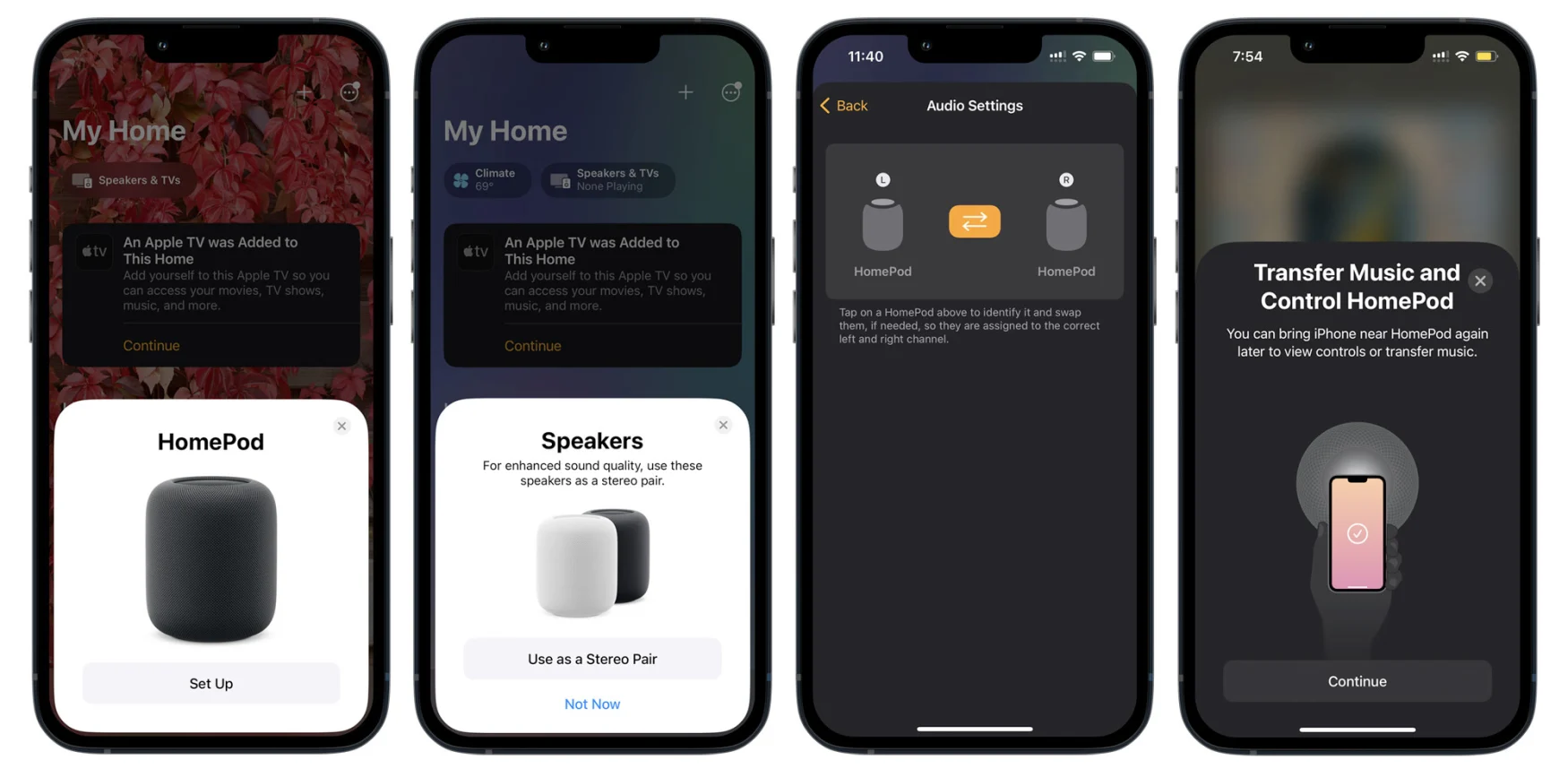
You have the ability to disable voice cues or the long press on the HomePod’s touch panel in order to activate the assistant (both are enabled by default). You can also have the speaker light up and play a sound when using Siri – or do one or neither. The Home app will let you use Siri for Personal Requests too, where the speaker can recognize your voice for things like messages, calls and reminders so long as your iPhone is close by. The software allows you to disable the HomePod’s intercom feature as well, should you prefer not to use that tool.
Like the first HomePod, the 2023 model is equipped with room calibration. This detects reflections off of walls and other surfaces to configure the sound for the best performance. The HomePod does this the first time you play music, but it isn’t constant monitoring. Instead, like it did on the previous generation, the setup leverages an accelerometer to determine when it has been moved. If it has, the speaker will then reinitiate the room sensing process when music is played.
A smart home with Siri
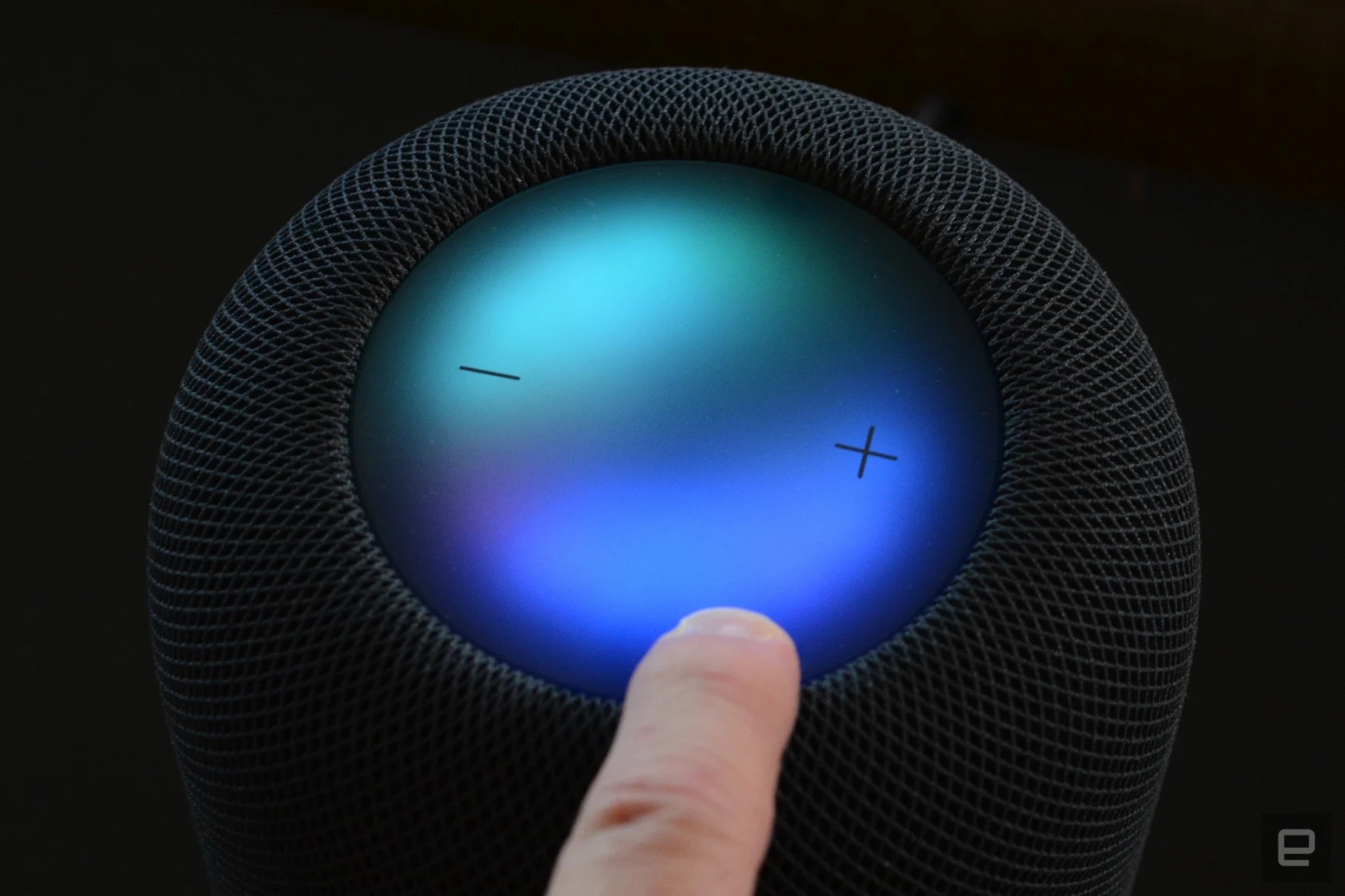
When we reviewed the original HomePod in 2018, one of our biggest gripes was with Siri’s limited abilities. Sure the speaker sounded good, but the lack of polish with the voice assistant made it seem like a work in progress. Apple has done a lot to improve Siri over the last five years, so a lot of those issues with the original have been fixed.
First, the HomePod, like Siri on your iPhone, is capable of recognizing multiple users. Personal Requests can allow it to peek at your Calendar, Notes, Reminders, Messages, Find My and more when you ask. Plus, HomePod can give each member of your family (up to six people) their unique responses from certain iPhone apps. What’s more, Siri can create recurring home automations without you having to pick up your phone and swipe over to the appropriate app.
Even with fewer microphones to pick up your voice, the new HomePod doesn’t suffer any performance setbacks. It’s just as capable as ever at picking out your voice even in a noisy room. And, while playing music with voice commands used to be limited to Apple Music, services like Pandora, Deezer and several others can now be controlled via Siri.
Gallery: Apple HomePod (2nd gen) review | 12 Photos
Gallery: Apple HomePod (2nd gen) review | 12 Photos
HomePod is also a smart home hub, easily pairing with HomeKit and Matter accessories. The new model is equipped with temperature and humidity sensing, and that info is displayed prominently in the Home app. Of course, you can use that data to create automations with other smart home devices. I don’t have a compatible smart thermostat, but I was able to successfully trigger a smart plug once the HomePod detected a certain temperature in my living room.
Sound Recognition is arguably the most notable new feature that Apple is debuting with the new HomePod, but it’s not ready yet. It can listen for smoke or carbon monoxide alarms and send a notification to an iPhone, iPad or Apple Watch. What’s more, you’ll be able to “check in” on what’s happening via an audio feed or camera. Sound Recognition won’t arrive until later this spring, so we’ll have to wait to test it.
Sound quality
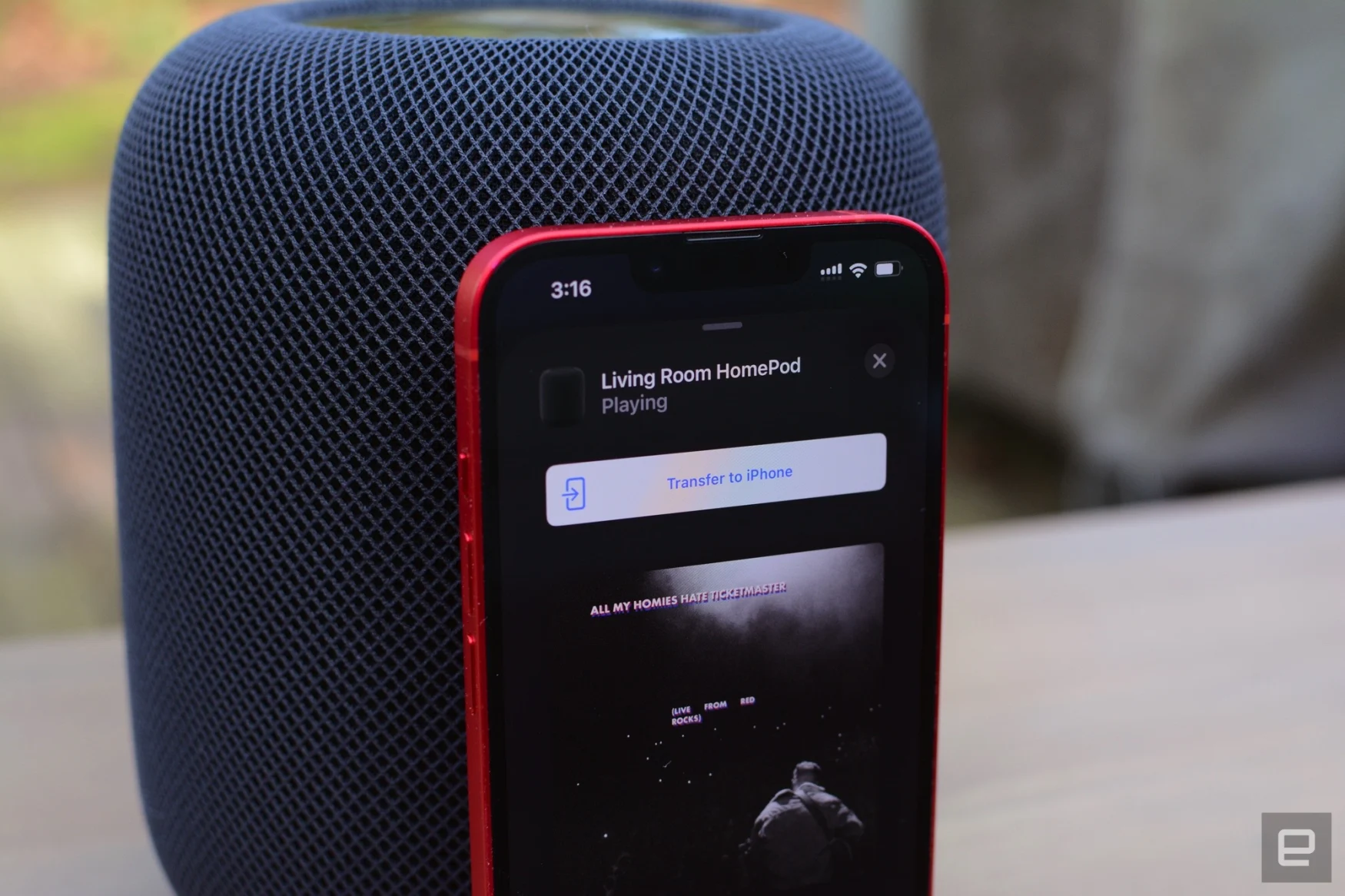
Audio quality wasn’t an issue with the first-gen HomePod and it’s still great here. But like the first version, Apple’s choice for tuning won’t appease everyone. There’s a continued emphasis on voice, so things like vocals in music or dialog on a TV show or movie take center stage. At times it’s fine though, with some genres and content, it leads to a rather subpar experience.
Don’t get me wrong, for the most part HomePod sounds outstanding, especially when you put it up against other smart speakers. The fact is many of those don’t sound very good at all, so Apple continues its track record for making a device that has serious audio chops and smart features. RTJ4 has ample bass for its bombastic hip-hop beats while Sylvan Esso’s No Rules Sandy gets enough low-end for its synth-heavy rhythms. Thanks to the HomePod’s excellent clarity, detailed styles like bluegrass and jazz shine. Sometimes the bass is a little too subdued for metal (Underoath’s Voyuerist) or full-band country (Zach Bryan’s 2022 live album), and the vocals too forward, but overall, it sets the standard for smart speaker sound. And the HomePod only shines brighter as a stereo pair.
When you add the second HomePod in the Home app, the software asks you if you want to use them together. Once you tell it which side the additional unit is on (left or right), the app completes the setup for you, assigning the appropriate channel to each speaker. Now everywhere you previously saw a single HomePod icon, you’ll see two, constantly reminding you of the stereo arrangement. The double speaker option is great for music. On Béla Fleck’s My Bluegrass Heart, the two-speaker arrangement adds a lot of dimensionality to each track. There was already a spatial element to the tunes, but dual HomePods heightens the sensation, making it seem like you’re in the middle of the musicians while they record each song.
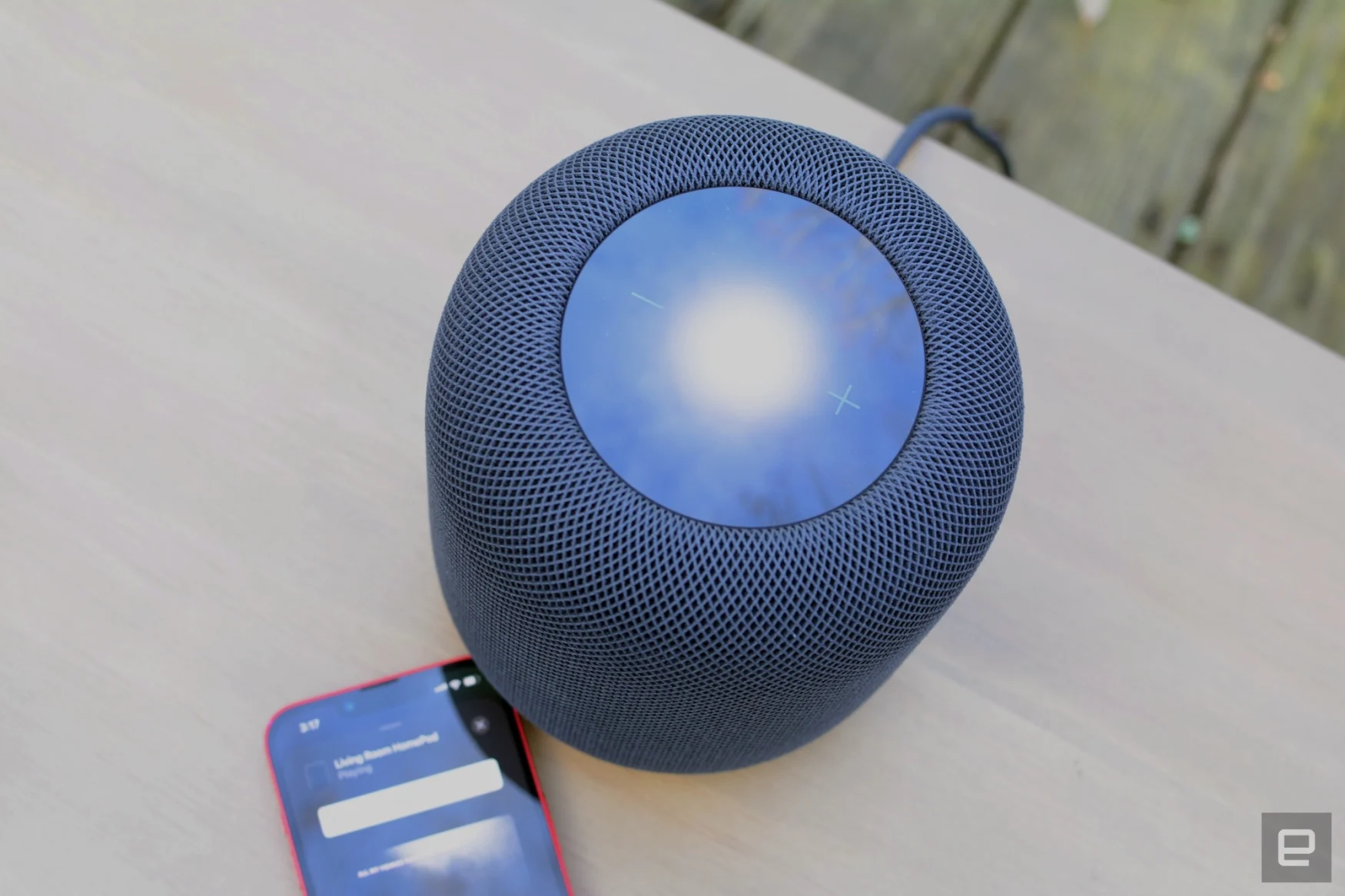
When you select a HomePod for use with the Apple TV you still need to deselect your TV speakers. Those aren’t disabled just because you’ve asked the streaming box to also send audio to a HomePod or two. TV audio with stereo pair is fine, but I can’t see using a single unit for the same purpose. In a multi-room setup you might want to send the sound from a live event like the Super Bowl to a solo speaker, but having just one as your lone living room audio from a TV isn’t a great experience. While the HomePod beams sound in all directions, with a single speaker it’s clear the sound is coming from a fixed location – something that’s a lot less noticeable with a pair or with a soundbar.
As is the case with vocals, dialog takes prominence with a HomePod and Apple TV. At times it can seem slightly muffled when watching things like live sports. Otherwise, there’s good clarity, nice bass and great dimensional audio when streaming Formula 1: Drive to Survive or Slow Horses. But, honestly, if you’re looking to improve your living room audio, a soundbar and sub is a better option. The driver arrangement in those speakers does a better job of filling a room completely and evenly. Plus, most companies give you the ability to use adjustments or presets to dial in how much you want those speakers to focus on dialog so you can fine-tune things to your liking.
The competition
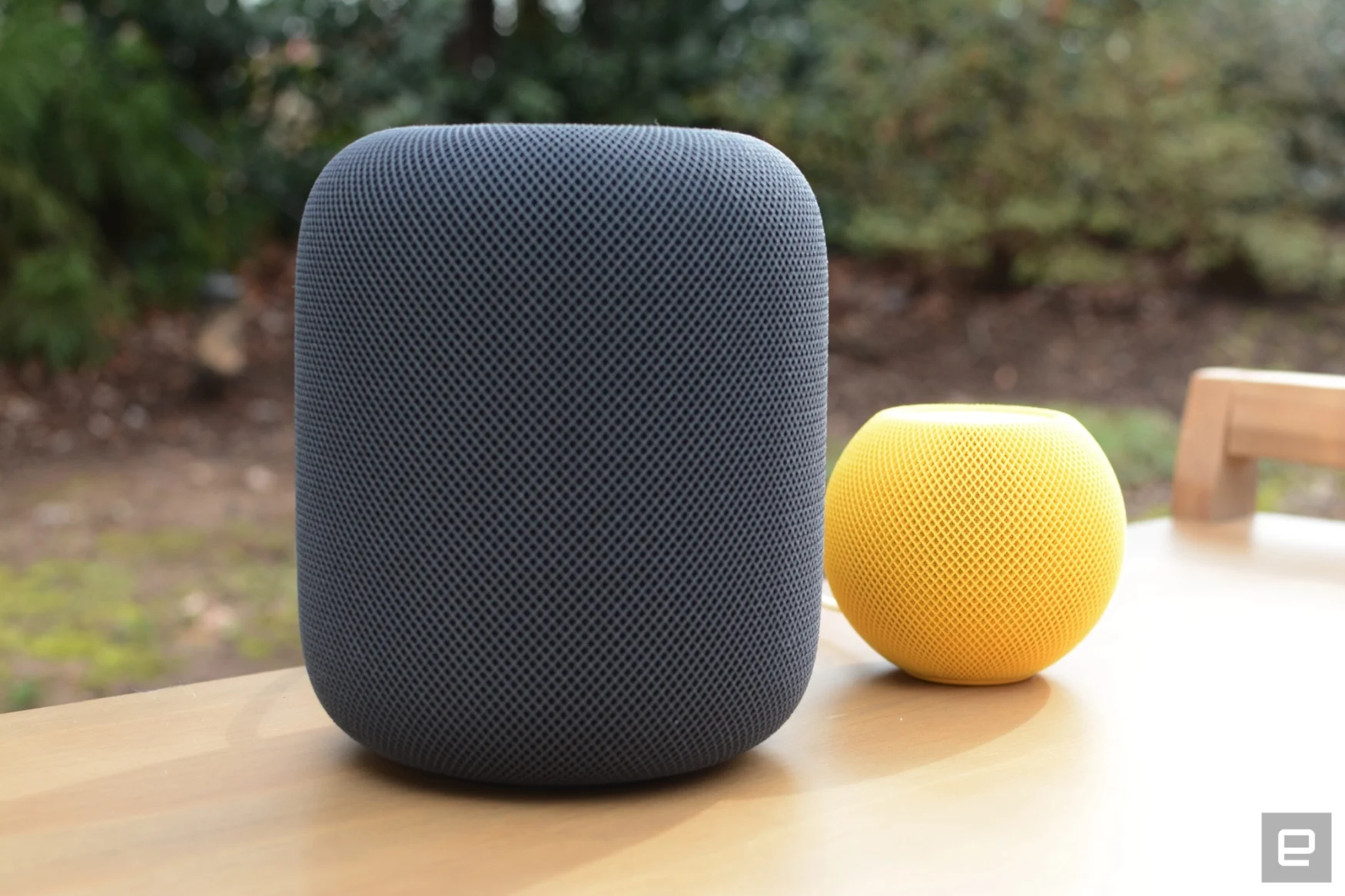
Because the HomePod is best suited to people who have married themselves to Apple’s ecosystem, the best alternative to the second-gen HomePod is the cheaper HomePod mini. If all you’re after is some Siri assistance with your smart home and a speaker that’s good enough for casual listening and podcasts, the $99 option will work well for you. Plus, Apple just unlocked the smaller speaker’s inactive temperature and humidity sensor and it’s due to get Sound Recognition.
Wrap-up
Apple has been preparing for a new HomePod for five years, constantly improving both the original version and the HomePod mini. And the fact that the company has made Siri a more capable companion certainly helps. Plus, there’s more smart home abilities than before. Apple hasn’t strayed from its emphasis on the spoken (or sung) word for HomePod’s sound profile, but that’s okay. It’s clear that the company is focused on expanding the toolbox for its smart speakers after their debut, so I’d expect that much like the original HomePod, this is just the beginning for the second generation.















